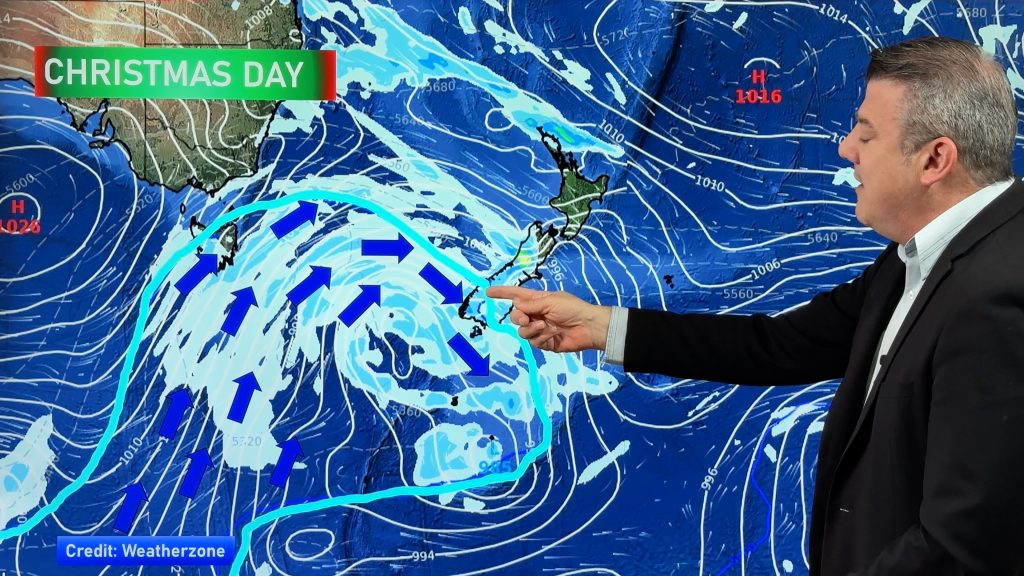Week in Weather – What’s been Making Headlines this week
27/09/2013 7:00pm

> From the WeatherWatch archives
It’s been a rough old week for the country – the sub tropical low which battered some in the far north and Coromandel regions probably coming a close second to the emotional battering given to us by some sailors halfway around the world.
The low pressure system brought with it some fairly heavy rain, winds which gusted at gale force in some parts, and generally a blustery and unpleasant state of affairs earlier this week – and it was tracked all the way here on weatherwatch.co.nz.
Auckland Civil Defence (ACD) said the extreme weather resulted in 65 flood incidents, 39 downed trees and nine damaged properties.
One person had to be evacuated in Wellsford, several roofs had lifted off homes and broken windows were reported, the agency said.
Further south, police confirmed residents had been evacuated from the Tolaga Bay area.
The storm also cut power to hundreds of homes. Lines company Vector said 1200 customers in Oratia and Hunua were without power, down from 6600 during the night.
Looking at weatherwatch.co.nz’s facebook page, the reaction has been mixed – with many complaining of a sleepless and noisy night, while others described the whole thing as a bit of a “non event”.
You can check out some of our readers’ damage reports and storm accounts here.
It may not be over just yet either – Weatherwatch’s Head Analyst Philip Duncan predicting a windy weekend for some in the North coming up…
In other storm related news, a scientist from Government climate researcher NIWA has warned kiwis to expect more tornadoes – after statistics emerged showing the frequency of twisters increasing over the past decade.
Tornado expert Dr Richard Turner, of the National Institute of Water and Atmospheric Research, said more tornadoes had been reported over the past decade than during the 1980s and 1990s combined.
“We’re seeing more than we’ve seen for 40 years,” he writes in the latest edition of Niwa magazine Water and Atmosphere.
A little further afield, and the world’s coral reefs are the subject of a programme designed to increase awareness of the danger that human activity poses to our sea life.
For the first time ever, a catalogue of high definition images is being put together to give a comprehensive insight into the condition of sea beds around the world.
The aim is to help reverse the rapid decline of the world’s coral reefs.
In Pakistan, a deadly earthquake has killed hundreds of people, with many more still missing, according to national authorities.
The 7.7-magnitude quake struck Tuesday in a remote, sparsely populated area of southwestern Pakistan, but it had severe consequences.
At least 330 people have lost their lives, a spokesman for the National Disaster Management Authority said Wednesday. In addition to the fatalities, 445 people were injured, he said.
And more people are still feared to be trapped in wreckage. Images from the scene showed some buildings reduced to rubble.

And back home, the threat of a huge, landslide-triggered tsunami to Wellington lurks below the water only 10km off the city’s coast – but thankfully the region’s quakes haven’t come near what it would take to trigger one.
Niwa scientists recently mapped the Cook Strait Canyon – the most prominent underwater feature of the strait – to gauge how nearby earthquakes had affected the deep and vast system.
They discovered that even the ripples of the July 21 quake, which struck at a magnitude of 6.5 near one of the least stable parts of canyon, were well below the level of ground shaking needed to activate a submarine landslide.
– What has impacted you most fromthe week – our storms, or the America’s Cup loss? Let us know in the comments.
– Drew Chappell for weatherwatch.co.nz
Comments
Before you add a new comment, take note this story was published on 27 Sep 2013.




Add new comment